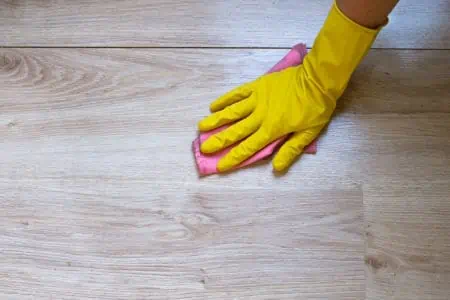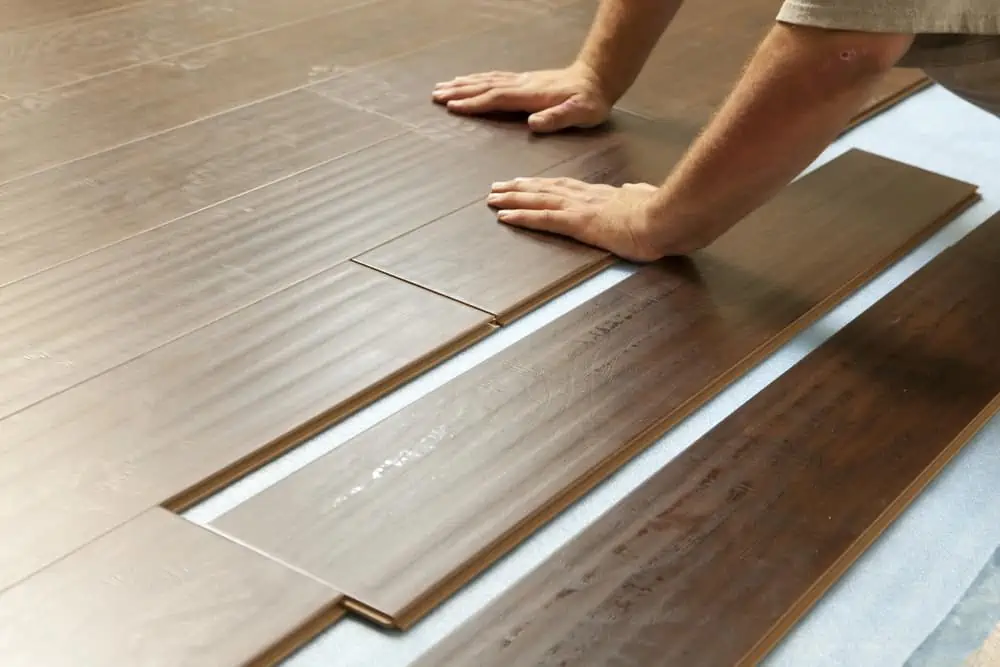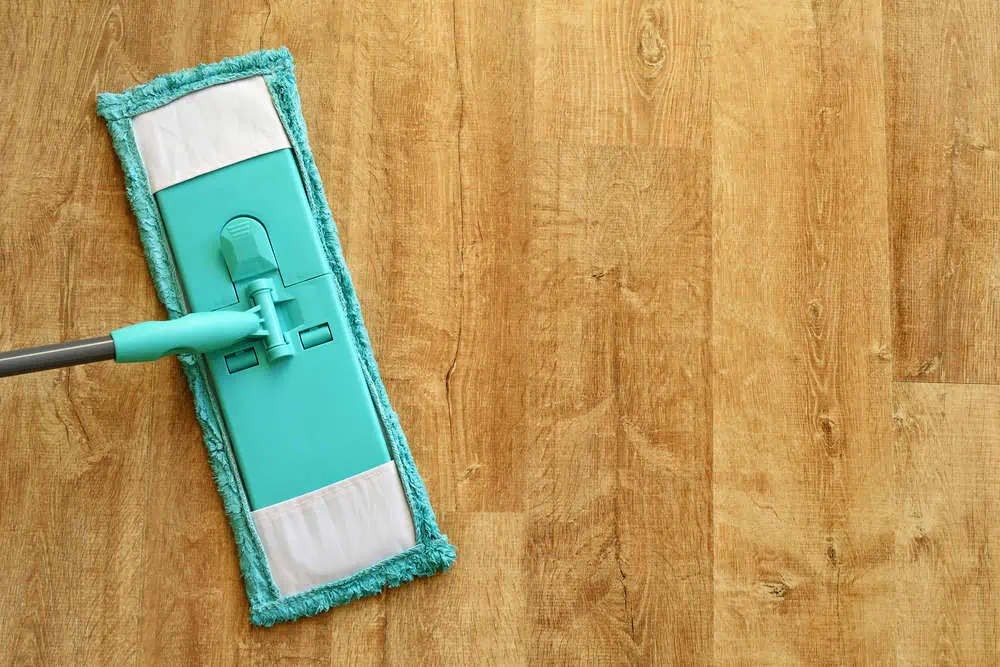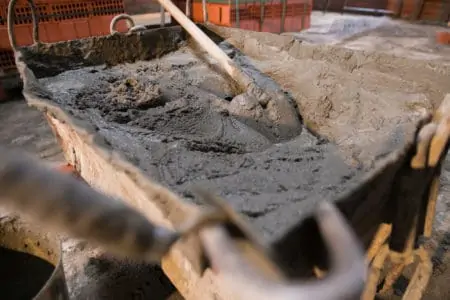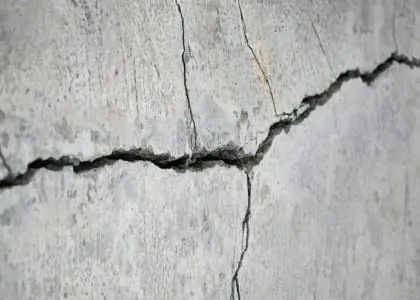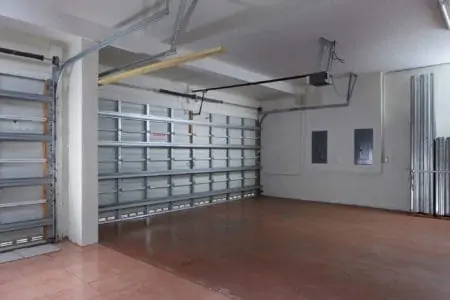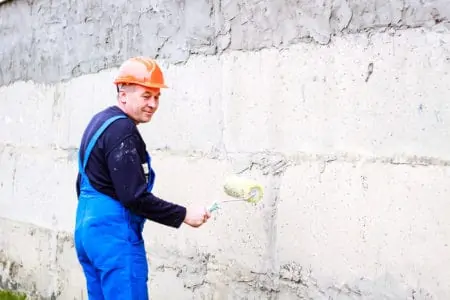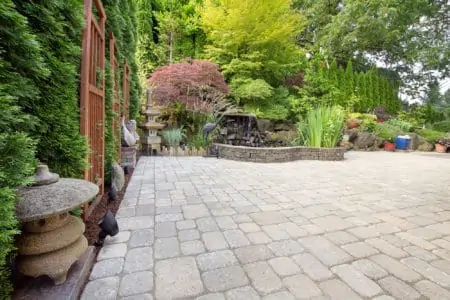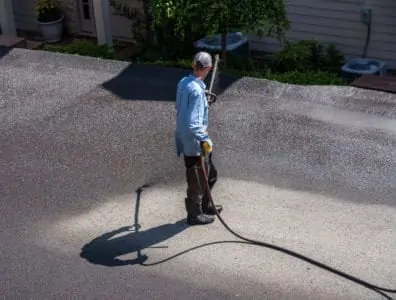Have you ever dreaded cleaning your laminate floors because they are so prone to damage? Since they tend to soak up moisture, laminate floors are sometimes regarded as high maintenance.
In reality, they are straightforward to clean if you know how. Today, I’ll show you how to deep clean laminate floors easily and effectively.
Key Takeaways
- Laminate floors are easy to clean with the right method, such as vacuuming and using a mop with a cleaning solution.
- Deep cleaning laminate floors every two or three months helps maintain their appearance and prevents damage from moisture.
- Using vinegar, alcohol, or store-bought cleaners can effectively clean and disinfect laminate flooring without causing damage.
- Avoid using abrasive tools, overusing water, and using the wrong cleaners to prevent damage to laminate floors.
What is Laminate Flooring?
Laminate flooring comprises layers of wood composites, which are compressed materials such as sawdust. It features a protective wear layer that shields the photographic layer beneath, making it less prone to scratch marks and dents.
Its resemblance to hardwood flooring is frequently uncanny; however, laminate flooring is synthetic. This type of fake wood is less expensive, scratches less easily, and cleans better than wood.
How to Tell If You Have Laminate Flooring
Take a good look at the floor’s grain. Natural wood grains are unpredictable, which means that if you have hardwood floors, the grain pattern will be unique.
Because laminate floors are manufactured in a factory, every few boards will match flawlessly. The more expensive the material, the more variety there will be. So, do not abandon your search for the matching pattern until you have checked a big portion of the floor.
Look at the floor to see if you spot any dents or scratches. Because hardwood is more susceptible to damage than laminate, if the floor is covered in little dings and gouges, it is most likely hardwood.
Since laminate also scratches, don’t assume that a single scratch indicates that your floor is hardwood. A floor that shows symptoms of regular damage is most likely natural.
How Often to Deep Clean Laminate Flooring
The truth is that a deep cleaning every two or three months will considerably benefit your laminate floor.
One critical point to remember is to avoid using water while thoroughly cleaning your laminate floors. The reason is that laminate is made of wood, and as we all know, wood and moisture do not mix well.
Even if your laminate is water-resistant, you should avoid excessive moisture to avoid harming your floor. Standing water may cause the wood to warp, change color, or swell. A deep cleaning helps preserve the state of your laminate floors, whether they are old or new.
How to Deep Clean Laminate Floors
If you want to know how to deep clean laminate floors, here are three different methods for you to try.
With Floor Cleaner
Read First
Always read the instructions and warnings on the back to ensure it’s safe to use on your specific flooring.
What You’ll Need
- Laminate floor cleaner.
- Dry mop.
- Vacuum cleaner.
- Moisture-absorbing cloth.
1. Vacuum the Floor
Get rid of all dust and debris that’s on the floor. Leaving any dirt can scratch the floor as you clean it. Use your vacuum cleaner or a dry mop for this step.
2. Apply Cleaning Solution & Mop
Grab your laminate floor cleaning solution and carefully read the label. Some cleaners require spraying directly on the surface, while others may require diluting in water.
After you’ve prepared your cleaning solution, start mopping the floor. When you’re using a spray, only apply it to a portion of the floor at a time and mop right away.
The cleaning solution shouldn’t be left to soak your laminate floor. If your floors aren’t dry two minutes after mopping, you’ve applied too much cleaning solution.
3. Allow Time to Dry
Grab a clean moisture-absorbing cloth and dry your floors manually. This will give the laminate surface a nice shine. Buff the floor by working in circles to ensure there aren’t any streaks.
Product Recommendations
If a DIY solution for deep-cleaning laminate flooring isn’t your thing, you can always buy one from the store. The market is saturated with laminate floor cleaner, so here are a few suggestions for those unsure which products to buy.
Black Diamond Stoneworks Wood & Laminate Floor Cleaner is a non-toxic cleaner formulated using water. It is designed to give your laminate floors a nice shine, and it’s safe to use around children and pets.
If you’re looking for a multipurpose cleaner that works on laminate, Bona Hard-Surface Floor Cleaner Spray does wonders. It’s a spray that you can quickly apply to a laminate surface and start mopping it immediately.
If you’re sticking to a budget, a cost-effective solution can be a concentrated cleaner like the Pledge Multi-Surface Floor Cleaner. This needs to be mixed with water and then used to clean your laminate floors.
With Vinegar
Vinegar is a fantastic alternative for cleaning laminate flooring that requires a deeper clean. This is not just a natural, light disinfectant; it also restores luster and neutralizes odors.
What You’ll Need
- Vacuum cleaner.
- White vinegar.
- Spray bottle or bucket.
- Wring or spin mop.
- Clean towel/cloth.
- Lemon juice (optional).
1. Mix the Solution
After thoroughly vacuuming your floors, it’s time to prepare the cleaning solution. There are two methods for cleaning with vinegar.
One method is to fill a spray bottle halfway with vinegar and halfway with water. Shake well and spray in sections.
If you’re using a spin or a wring mop, you want to use one cup of white vinegar for each gallon of water.
Sensitive To Smells
If you are sensitive to the scent of vinegar, add a few drops of lemon juice to the mix to neutralize the smell.
2. Clean the Floor
When using a mop, dip it into the bucket and squeeze as much liquid out as you can. Start at the back of the room and clean the floor in sections. If you use a spray bottle, apply the solution and clean immediately.
3. Dry the Floor
Grab a clean microfiber cloth and start wiping the floor. Manually drying the floor prevents damage but also makes it less slippery and safe to walk on. Remember that laminate floors are not textured, so they are naturally slippery.
With Alcohol
Alcohol is a disinfectant and can sanitize your floor as few other cleaning solutions can.
What You’ll Need
- Rubbing alcohol.
- Vacuum cleaner.
- Spray bottle or bucket.
- Mild dish soap.
- Clean microfiber cloth.
- Microfiber mop.
1. Preparing the Solution
Start out by cleaning the floors with a vacuum cleaner. When making the cleaning solution, you have the same two methods described earlier: a spray bottle or a bucket.
Rubbing alcohol is usually preferred, but people sometimes use vodka or gin. Adding just a few drops of dish detergent or some essential oils can give your cleaning solution a nice fragrance.
2. Cleaning the Floor
If you’ve prepared your cleaning solution in a spray bottle, apply it on the floor and mop it straight away. For solutions prepared in a bucket, dip the mop and get as much moisture out before cleaning the floor.
3. Dry the Floor
Use a clean microfiber cloth to dry the floor manually. This eliminates streaks and film and protects your laminate floors from excessive moisture.
Homemade Laminate Floor Cleaner
Water is usually sufficient to clean laminate wood floors effectively. You can also utilize homemade DIY cleansers made entirely of natural ingredients for a more thorough cleaning, especially on dirty floors or stained laminate flooring.
Vinegar and rubbing alcohol are two extremely effective cleaning agents. Both have a strong disinfecting effect; vinegar’s acidity helps break down tougher stains, while alcohol dissolves greasy and sticky grease.
What You’ll Need
- 20-ounce spray bottle.
- Six oz. white vinegar.
- Six oz. rubbing alcohol.
- One squirt of non-sticky dish soap.
- Five ml of essential oil.
- Distilled water to fill the bottle.
When combining them, allow approximately one ounce of shaking room. If you do it correctly, your water should have a slight tint of color from the essential oils or dish soap you’ve chosen.
Removing Stains on Laminate Floors
Although laminate flooring has the appearance of wood, it is not, and stains rarely penetrate the finish and discolor the flooring material. Even water spots and rings are frequently surface stains, not finish flaws.
Because stains remain on the surface, they can be removed using appropriate solvents or, in certain situations, mild scraping.
Most laminate flooring producers recommend using powerful solvents such as acetone to remove stubborn stains. This is a quick, easy and effective method but can sometimes be a bit harsh on the finish.
If you’re worried about the floor’s finish, use a solution of water, vinegar, and soap.
Scraping Spills
If you have a major paint or grease spill on your floor, address it immediately. Preferably while the substance is still fresh and easily dabbed away with an absorbent towel. If you miss that window, then wait for it to solidify and chip it off.
In rare circumstances, you can expedite the hardening process by placing a plastic bag filled with ice cubes on the spill for five minutes. Scrape the surface with a plastic instrument, such as a putty knife or a paint scraper, to prevent harming the finish.
Stubborn Stains
Using an abrasive brush or pad to attempt to remove stubborn stains from the floor is never a smart idea. Once a finish has been scuffed, it cannot be re-scuffed. It will continue to be dull.
The best approach for stubborn stains is using rubbing alcohol or acetone. Alcohol will effectively remove dyes, while acetone works better with paint or oil-based stains. Just keep in mind my comment about the floor’s finish.
How to Clean Laminate Floors Without Leaving a Film
Dreaming of clean floors without residue and streaks? These tips can help:
- It’s best to use spray bottles when applying the cleaning solution. This allows you to control moisture levels better.
- A microfiber mop is great for streak-free laminate floors. It’s absorbent and traps dirt very well.
- Mop in small sections. As you do this, use even strokes.
- To prevent streaks, mop in the direction of the grain.
- Manually dry the floor. Wiping the floor dry will also help prevent streaks.
- If you have extra refill pads, change them when the current ones get too dirty.
What to Avoid When Cleaning Laminate Floors
While knowing how to clean laminate floors is pretty straightforward, some common mistakes people make could lead to floor damage.
Don’t Leave Stains on the Floor
Contain leaks when they happen. Because liquids can damage laminate floors, it is vital to limit their exposure.
Avoid Abrasive Tools
Laminate flooring is prone to scratching, so avoid anything abrasive. You’ll want to use a dust mop or a broom with soft bristles to sweep up debris. Avoid using attachments with a rotating brush or a beater bar when vacuuming, as these might harm the surface.
Avoid Overusing Water
Traditional mopping is not recommended for laminate floors due to the possibility of water seeping into the gaps and causing damage. Additionally, pools of water might cause stains or fading.
Avoid using the Wrong Cleaners
Oil-based cleaning agents can create streaks and residue on the flooring and erode the protective sealant. If you must use laminate cleaners, use it sparingly and on a microfiber cloth or mop rather than directly on the floor. Avoid using polish or wax on laminate floors.
FAQs
Final Words
Having them around the house seems less stressful once you know how to deep clean laminate floors. Laminate floors and moisture don’t make a fine pair, but the plethora of cleaning tips we’ve offered today should have you covered.
